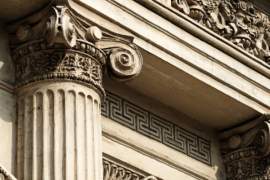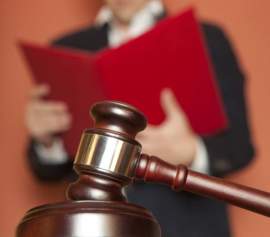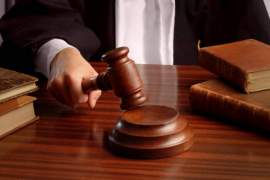
Thurgood Marshall

Popular In Supreme Court
How Many Supreme Court Justices Are There Justice Clarence Thomas Landmark Supreme Court Cases Supreme Court Building Us Supreme Court Docket Chief Justice John Roberts Hugo Black Justice Antonin Scalia Roger B Taney Supreme Court Justices Justice Elena Kagan Justice Sonia Sotomayor
Supreme Court Justices: Thurgood Marshall
Thurgood Marshall was the 96th Justice of the Supreme Court of the United States who served from October 1967 until October 1991. Justice Thurgood Marshall also the first African-American justice on the United States Supreme Court.
Before becoming a justice, Thurgood Marshall was a lawyer who was most noted for his high success rate when arguing cases before the Supreme Court. He was more particularly known for his victory in Brown v. Board of Education. Thurgood Marshall argued more court cases before the Supreme Court than anyone other individual in the history of the Supreme Court. Marshall also served on the Second Circuit of the United States Court of Appeals after being appointed by President Kennedy and then later was appointed by President Johnson in 1965 as the Solicitor General. President Johnson also nominated Marshal in 1967 to the United States Supreme Court.
Thurgood Marshall was born on July 2, 1908 in Baltimore, Maryland grandson and the great-grandson of slaves. Marshall attended Frederick Douglass High School in Baltimore where he graduated in 1925. He then went on to attend Lincoln University in 1930. There, Thurgood Marshall was initiated as a member of Alpha Phi Alpha, the first black fraternity.
While Thurgood Marshall wanted to apply to the University of Maryland School of Law, his hometown law school, the dean of the school said the school’s segregation policy would prevent his acceptance. Instead, Marshall attended Howard University School of Law and graduated in 1933 as the first in his class.
As a Justice of the Supreme Court, Thurgood Marshall believed in the Constitution being a living document. Marshall argued that the Constitution should be interpreted with respect to the political, cultural, and moral climate of the age of interpretation. This idea was also looked at as loose constructionism, meaning that the Constitution had a dynamic meaning or that the properties of the constitution were forever changing. The main idea that Marshall tried to convey was that the contemporaneous society should be considered when interpreting key constitutional phrases.
Famous Cases
Terry v. Ohio (1968): A decision by the Supreme Court which stated that if a police officer stops an individual or suspect on the street and frisks the person without any probable cause to arrest, the prohibition in the Fourth Amendment on unreasonable searches and seizures is not violated, as long as the police officer has reasonable suspicion that the individual has committed, is committing, will immediately commit a crime. The police officer must also have a reasonable belief that the suspect may be possibly armed and dangerous.
The foundation of the Supreme Court decision was based on the understanding that the exclusionary rule has limitations, meaning that the point of the rule is to protect citizens from unreasonable searches and seizures that are aimed at gathering evidence, rather than searches and seizures for other reasons, such as preventing crime or personally protecting police officers.
Chief Thurgood Marshall joined Chief Justice Warren's opinion for the Court. The majority opinion first began by reciting the principles of the Fourth Amendment and whether they included situations such as the stop and frisk involved in the case. Two important points that the court particularly made were regarding the admissibility of evidence obtained through this police action, and whether the stop and frisk procedure was the result of officers over-exerting their authority.
The court, including Chief Thurgood Marshall also had to determine just when specifically a person would be considered “seized” and what would constitute as a “search”. The Supreme Court rejected the notion that a stop and search could not be considered a search or seizure subject to the Fourteenth Amendment’s protection, but instead allowed more police action outside of a traditional arrest to be considered a seizure. The court also had to examine just what “reasonable” would include when taking reasonable action. With these principles though out, Justice Thurgood Marshall and the Court feel that the stop and Frisk of Terry was in fact reasonable and that the evidence found during the search could be properly admitted because of this.
Miller v. California (1973): A landmark United States Supreme Court case which looked at what specifically constituted as unprotected obscenity for the sake of the First Amendment. The decision restated that obscenity was not protected under the First Amendment. It also established the Miller test, which could determine what constituted as obscene material. The appellant was Marvin Miller, an operator of a large mail-order business for sexually explicit material. He had conducted a mass mailing campaign advertising the sale of illustrated books that were labeled as adult material. The Superior Court of Orange County found him guilty of a misdemeanor for distributing obscene material knowingly. This conviction was then affirmed by the Court of Appeals of California.
When the case came up to the Supreme Court, the issue was whether the distribution and sale of obscene material was a protected action under the First Amendment. The Supreme Court ruled that distributing and selling was not protected. However, the Supreme Court acknowledged the potential dangers of attempting to regulate any form of expression and explained that State statutes that were designed to control the sale and distribution of obscene materials should be carefully limited.
United States v. Nixon (1974): was a United States Supreme Court unanimous decision which involved President Richard Nixon and the late stages of the Watergate scandal. This Supreme Court Case is often thought of as an extremely significant precedent which limits the power of a United States president.
The Watergate scandal started during the presidential campaign in 1972 between President Richard Nixon and Democratic Senator of South Dakota George McGovern. On June 17, before President Nixon won the presidential election, five burglars broke into the Democratic headquarters in the Watergate building complex in Washington, D.C.President Nixon appointed Archibald Cox as the special prosecutor, charged with carefully investigating the break-in, but then Nixon arranged to have Archibald Cox fired in the Saturday Night Massacre. However, public outrage forced President Nixon to appoint a different special prosecutor, Leon Jaworski, who was to conduct the Watergate investigation for the United States government.
In April 1974, Jaworski received a subpoena which ordered Nixon to release certain papers and tapes related to meetings between Nixon and those indicted by the grand jury, which contained damaging evidence involving those men and possibly the President. Nixon handed over edited transcripts and hoped it would be enough, but Judge John Sircica, the judge of the D.C. District Court, ordered the president to turn the tapes over. James St. Clair, Nixon's attorney, and Jaworski appealed to the Supreme Court. St. Clair argued the issue should not be subject to "judicial resolution" since it was a dispute within the executive branch and that Nixon had an executive privilege to withhold and protect communications between Government officials and those advising them.
All of the Justices, including Thurgood Marshall, contributed to the opinion which was unanimous decision. The opinion stated that the Supreme Court did have the authority to resolve the issue and that and that Jaworski had proven that there was a significant chance that the tapes contained conversations relevant information to the offenses of the indictment. The Supreme Court rejected the claim that there was an unqualified, absolute Presidential privilege of immunity under all circumstances from the judicial process.
Regents of the University of California v. Bakke (1978): A landmark decision of the United States Supreme Court which ruled that the admission process of the University of California at Davis Medical School, which put aside 16 of the 100 available seats for African American students was unconstitutional. The justification of "diversity in the classroom" for looking at race as a factor in the school’s admissions policies was not the same in comparison to the original purpose stated by the school, whose admissions program that was under review was designed to ensure the admissions of minorities that were traditionally discriminated-against. UC Davis Medical School developed the program originally to decrease the historic deficit of conventionally disfavored minorities in the medical profession and in medical schools, fight against the effects of societal discrimination, increase the amount of physicians who would practice in communities that were currently underserved, and receive the educational benefits that result from a student body that is ethnically diverse.
Justice Thurgood Marshall joined Justice Powell’s opinion that the school had to admit Bakke to the school. However, his reasoning for this did not include the majority of justices. Justice Thurgood did join this opinion, which stated that the school had a reasonable and compelling interest in a creating a diverse student body and therefore could look at race as a factor in admissions. However the school could not specifically aside seats for certain races, which would automatically exclude others due to race.
Bowers v. Hardwick (1986): A Supreme Court decision that supported the constitutionality of sodomy law from Georgia which both private anal and oral between consenting homosexual adults. Seventeen years after the decision in Bowers v. Hardwick, the Supreme Court overruled the decision directly in Lawrence v. Texas (2003), and stated that these laws were unconstitutional. Justice Thurgood Marshall, joined a dissent by Justices Blackmun which said that the case was no longer just about the fundamental right for a citizen to engage in homosexual sodomy, but went further by looking at the rights most valued by citizens, specifically the right to be left alone. Justice Thurgood Marshall also joined a dissent made by Justice Stevens which went even further away from the majority opinion and said that the Supreme Court ordered the dismissal of the complaint made by the respondent even though the statute in question prohibits all sodomy. This prohibition was extremely unconstitutional for heterosexuals and it was clear through the States actions that the respondent alleged a constitutional claim which was sufficient enough to stand up to a motion to dismiss.
Texas v. Johnson (1989): A landmark decision by the United States Supreme Court which invalidated prohibitions regarding desecrating the American flag which was enforced in 48 of the 50 states.
This case revolved around Gregory Lee Johnson, a former member of the Revolutionary Communist Youth Brigade, who participated in a political demonstration in Dallas, Texas during the Republican National Convention of 1984, which protested some policies of the Reagan Administration as well as some companies in Dallas. A demonstrator gave Johnson an American flag which was stolen from a targeted building. Once the protesters arrived at Dallas City Hall, Johnson drenched the flag with kerosene and set it on fire. While no one was injured, some claimed to be extremely offended.
Johnson was charged with breaking the Texas law that prohibited the desecration of a venerated item. He was convicted, fined, and sentenced to a year in prison. The Court of Criminal Appeals in Texas saw the case through an appeal and overturned the conviction, saying that the State did not have the power to could not punish him for burning the flag since it was protected under the First Amendment as symbolic speech. However, the State of Texas claimed that its interests were more important than the symbolic speech rights because the state wished to preserve the national flag as a symbol of national unity while maintaining order, but the court stated that neither of these could justify the conviction.
The State asked the U.S. Supreme Court to hear the case. The opinion of the court was a controversial 5-4 decision, with Justice Thurgood Marshall being a part of the majority. The court first looked at whether the First Amendment could include non-speech acts and, if so, if flag burning was included. The court found that in this case, the flag burning constituted as expressive conduct, allowing Johnson the protecting under the First Amendment. The court also found that there was no disturbance of the peace due to the flag burning, and rejected the States claim that the flag burning was to incite breaches of the peace. The last issue was if the states had a legitimate interest in preserving the national flag as a symbol of principles and national identity. However, the majority found that the lack of evidence for Constitutional support regarding flag burning, so the Court concluded that it was protected under the first amendment.
NEXT: A Short Biography on Justice William Howard Taft




















